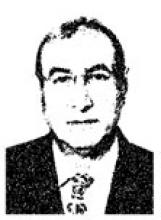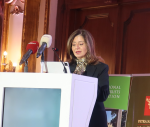You are here
Class divisions multiply
Dec 24,2017 - Last updated at Dec 24,2017
I often take issue with my classmates, now in our anecdotage, on whether life was better in the good old days when we were kids at school. I maintain that the best thing for the good old days is a bad old memory.
But I must confess that life then was simpler and clearer. Most people, in Amman at least, had roughly comparable levels of income, with very few displaying noticeably more wealth or poverty than the rest.
Today, society is much more complex. Economic disparities are considerably larger. Affluent and poor neighbourhoods, often adjacent, are separated by more than fences. Rifts include different life experiences, and therefore different cultures and even value systems within the same society. Rich and poor have different myths and assumptions about one another.
This is not merely the result of urbanisation. Similar transformations are visible in societies with considerably longer urban traditions.
In the past, for instance, people everywhere were stratified by what Marxists called their relationship to means of production. The type of work that people did defined their income,opportunities, and even their leisure pursuits. It placed them in the upper, middle, or working class.
But today,one’s day job, or the lack of it, is no longer adequate to place a person in a social category. Sociologists still study “economic capital” (income, value of one’s home, savings…etc.), but they also consider “cultural capital” (education, cultural interests and activities), and “social capital” which includes the size and status of one’s social network.
In the 1970s, when I was an undergraduate, we all considered education as the great equaliser that would permit free social mobility; but in today’s global marketplace, education has become stratified. Quality education, and the opportunities that it brings, have a price tag that makes them inaccessible to the majority.
Also, the new generation does not fit old class norms. Young urban youth today invest more in building social and cultural capital than economic capital.There is also a whole underclass that includes single parents, the “working poor”, part timers, and casual workers who fall below the poverty line, as well as migrants, and “guest” workers working legally or illegally.
In representative democracies, political parties, which were established largely on the basis of the old socioeconomic divisions, no longer represent the majority of society. In fact, mainstream parties are no longer clear about whom they represent and what their constituents want.
This confusion has led to overlap between the programmes of mainstream parties to the point where it is sometimes hard to tell them apart. It may also explain the rising popularity of traditional outsiders, like the extreme-right nationalist parties.
All this may be significant for Jordan, where the new social divisions clash with lingering tribal identity, and with attempts to encourage the development of political parties. But the bottom line everywhere is that, when any one class is made to feel that society is an organised conspiracy to oppress, rob and degrade it, no person or property will be safe.












